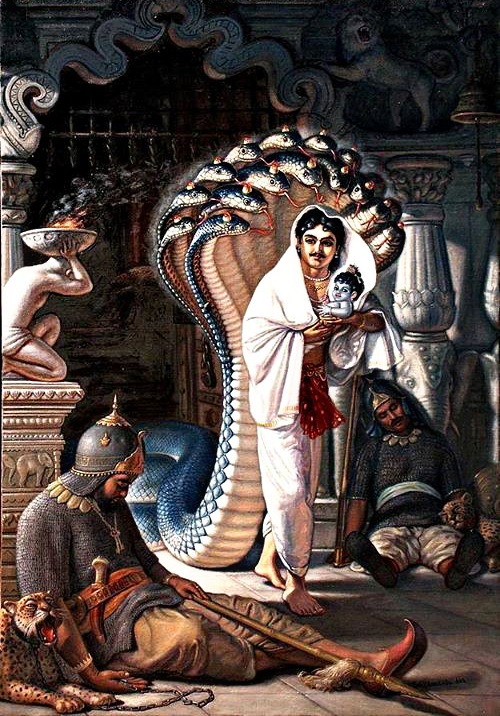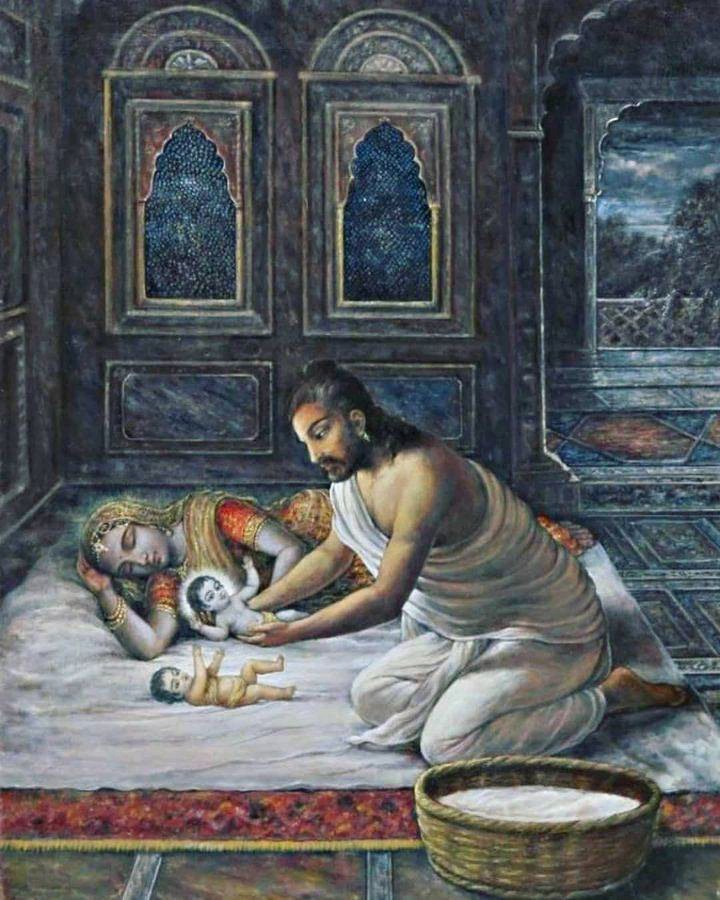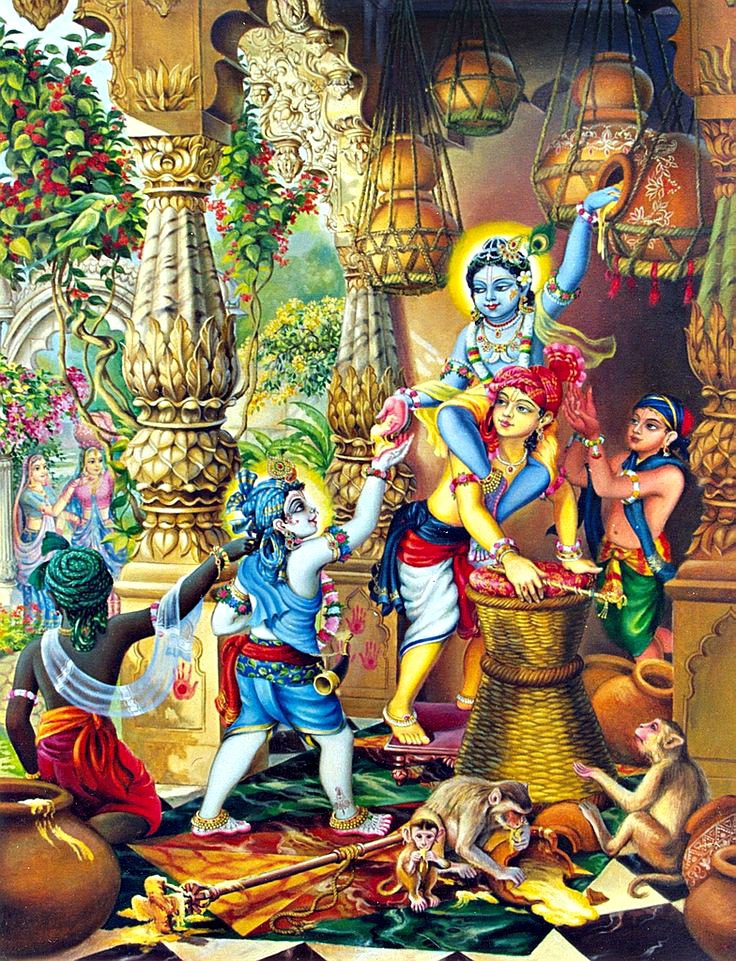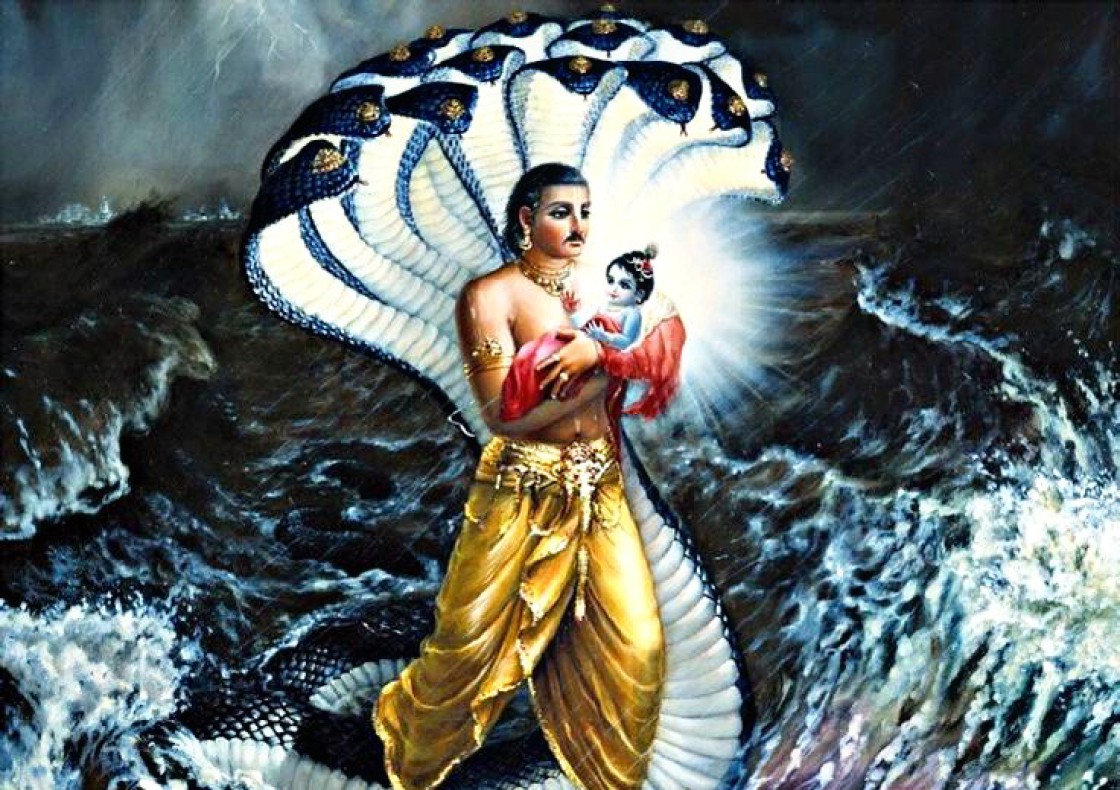As we all know that there are total 10 incarnations of Bhagwan Vishnu, which are known as Dhashavatara (दशावतारः), out of which 9 are already incarnated. The eighth incarnation of Bhagwan Vishnu is Shri Krishna. Shri Krishna Janmashtami is celebrated as the birth anniversary of Shri Krishna. Just like we celebrate the birth anniversary of Bhagwan Ganesha, we also celebrate the birth anniversary of all the 9 incarnations of Bhagwan Vishnu as, Bhagwan Vishnu imparted good teachings through his incarnations & re-established the Dharma (Religious values).
Janmashtami is also known as Gokulashtami, Shri Krishna Jayanti & also only Janmashtami. In South India especially in Kerala this day is celebrated as Rohini Ashtami. Janmashtami (जन्माष्टमी) is celebrated since the birth of Shri Krishna. Janmashtami (जन्माष्टमी) is the 5200+ years old ritual celebration of the birth anniversary of Shri Krishna. As per the Vedic time chronology, in the year 2025 (i.e., 2081 according to the Vikram Samvat) it will be the 5252th birth anniversary of Shri Krishna.
Shri Krishna was born at the midnight on the 8th day of the dark fortnight of the Shravana month (श्रावणः कृष्णपक्षे अष्टमी) also, he was born in the Rohini Nakshatra (constellation). As he was born on the 8th day which is known as Ashtami in Sanskrit & so this day is known as Janmashtami (जन्माष्टमी). The enthusiasm for this festival is seen throughout India & even in the other countries around the globe. Janmashtami (जन्माष्टमी) is celebrated in different ways in various cultures.

Significance of Janmashtami (जन्माष्टमी) –
Shri Krishna was born on the Ashtami Tithi. According to the Scriptures Tithi plays an important part in the life. The ruling Deity of Ashtami Tithi is Adi Shakti. This Tithi is highly effective for achieving victory & accomplishing tasks that involves bravery & courage. The energy that flows on this day gives a person the courage to face life & overcome adversities.
Shri Krishna chose Ashtami Tithi to fulfill the task of killing Kansa & many other demonic forces. Hence, work done during Ashtami Tithi gives you the strength to defeat your enemies. Shri Krishna has all the qualities of someone who is born on Ashtami Tithi such as, desire to do good for society, impressive debating skills & valour.
Now, Nakshatras also play a vital part in our life. Shri Krishna was born during the Rohini Nakshatra. Rohini Nakshatra is considered as one of the brightest star governed by Bhagwan Brahma, who represents the essence of creation, fertility, growth & is led by the planetary influence of the Moon. So, Shri Krishna has the substantial quality of charm & magnetism of Rohini Nakshatra.
Those born in Rohini Nakshatra rely more on gestures than words in turning a situation to their advantage. Rohini Nakshatra makes one essentially creative, imaginative & talented; combines imagination with action. Rohini Nakshatra is also associated with prosperity, abundance, beauty with a hypnotizing effect on others. No wonder Shri Krishna was handsome looking & mesmerised not only women but also men though his appearance.
Devotees of Shri Krishna all over the world celebrate Janmashtami (जन्माष्टमी) by fasting, performing dramas, worshipping & preparing a grand feast to please Shri Krishna. There are religious as well as scientific reasons of observing fast on this day. Spiritually speaking, as we all know that Shri Krishna was born in the jail, so because of this reason devotees fast out of the saddened feeling that he had no choice but to take birth in prison for the welfare of the people.
Scientifically speaking, as we all know that, fasting is an ancient spiritual discipline that is very good for physical, mental & spiritual health. As this day falls during the Shravan month, which is generally during the mid-monsoon season. So, fasting for a day in between such season, helps the metabolism to renew itself & triggers detoxification process in the human body. Fasting during monsoon season, could lead to the release the brain derived neurotrophic factor (BDNF), which is crucial to produce stem cells. These cells are the essential units of human metabolism working pretty much faster as the body’s repair department with their potential to regenerate & repair damaged tissues.
Fasting on this day also helps in producing new White Blood Cells, empowering immune system against the body’s external viruses. It also helps the centre of the nervous system function better. Similarly, fasting helps the brain to rest in a period when other organs of the human body, such as stomach are less in use.
So, through this we should understand that the festivals which are celebrated by observing fast has more scientific benefits which enhance the religious benefits. As according to the Scriptures, the fasting days are allotted according to the health benefits of the existing environment.

Historical account of Janmashtami (जन्माष्टमी) –
As we all know that this day is the celebration of the birth anniversary of Shri Krishna, the legend also revolves around the birth of Shri Krishna. According to the Bhagvata Purana, during Dvapara Yuga, Mother Earth was unable to bear the sins & cruelty committed by evil kings, rulers & demonic forces. Mother Earth, then requested Brahma Dev, the creator of the Universe, to relieve her from the burden of such sinful acts of the people. Brahma Dev then asked Bhagwan Vishnu for reincarnation & to relieve the Mother Earth from such evil forces. Bhagwan Vishnu accepted the request & assured to defeat such forces.
The ruler of Mathura, Kansa was one such evil king. He had a sister named Devaki, who was married to Vasudeva. The day Devaki & Vasudeva got married, a voice from the sky (oracular) forecasted that Devaki's eighth son will bring an end to Kansa’s rule & will kill him. Frightened Kansa actually wanted to kill Devaki but Vasudeva promised him that he will give all his 8 children in the hands of Kansa if he would spare Devaki's life so, instead of killing, Kansa imprisoned the couple. He then vowed that he will kill every child of Devaki & Vasudeva. Seeing their first seven children being killed by the cruel Kansa, the imprisoned couple feared giving birth to their eighth child.
One night Bhagwan Vishnu appeared before them. He told them that in the form of their son, he will return and rescue them from Kansa's kingship. The divine baby was born at the midnight on the 8th day of the dark fortnight of the Shravana month (श्रावणः कृष्णपक्षे अष्टमी). The day he was born, Vasudeva found himself miraculously freed from prison. He ran away with the infant to a safer house & Bhagwan Vishnu removed all the obstacles from Vasudeva's path. Vasudeva reached a house in Gokul, exchanged Shri Krishna with a newborn girl of Yashoda & Nanda & returned to the prison with the girl child. As soon as Kansa came to know about the newborn, he again tried to kill the child. But the infant rose to the heaven & transformed into the Goddess Yogamaya & said, "O foolish Kansa! What will you achieve by killing me? The one who is going to kill you is already born.” Meanwhile, Krishna was raised as a cowherd in Gokul by Yashoda & Nand & became a skillful musician. At the age of fourteen, he returned to Mathura, killed Kansa & gave the throne to the Ugrasena the father of Kansa). He not only killed Kansa, but he killed many demonic forces & restored the Dharma throughout his life span.

Ritual ceremony of Janmashtami (जन्माष्टमी) –
Janmashtami (जन्माष्टमी) is celebrated for two days. The first day is known as Krishna Jayanti or Janmashtami & the second day is popularly known as Parna or Dahi Handi. Hindus celebrate Janmashtami by fasting, singing, praying together, preparing & sharing special food, decorating the altar, visiting temple of Shri Krishna & decorating the idol of Shri Krishna. Temples dedicated to Shri Krishna organize special Darshan (auspicious sight) for devotees & the Bhagavata Purana & Bhagavad Gita are recited on this day. In many cultures, a dance drama is organized - known as ‘Raslila’ - particularly in the regions of Mathura, Assam, Manipur, Rajasthan & Gujarat. People decorate their houses with flowers & light.
The actual celebration of Janmashtami (जन्माष्टमी) takes place during the midnight as Shri Krishna was born at the midnight. The baby idol of Shri Krishna at midnight is bathed with water & milk, then dressed with new dresses & worshipped. Sweets are first offered to God & then distributed among the devotees as Prasada. Later, Aarti is also done.
Traditionally, Panjiri is offered to Shri Krishna on this day. Panjiri is considered as one of the most favourite dishes of Shri Krishna. Panjiri is a Farali dish that is made on Krishna Janmashtami as well as on several other festive occasions that include fasting. It is most commonly made in North India, especially Uttar Pradesh & Punjab. It is made with the powder of coriander seeds, sugar & dry fruits. Panjiri is a nutritious dish. In some states, coriander seeds powder is replaced with wheat flour. A special dish of white butter is also offered to Shri Krishna on this day as he was fond of white butter.
On this day, the devotees wake up early in the morning & wash their home temples, decorate the home temples & decorate the homes with lights & flowers. They arrange a small swing for the idol of baby Krishna & decorate it too. Devotees also observe fast by eating farali food or by eating only fruits & milk. Some observe fast till the midnight & after that offer food to Shri Krishna & eat & some observe fast for the whole day & does Parna on the next day after sunrise.
According to the Scriptures, farali food includes; potato, elephant foot yam (suran), sweet potato, green chili, barnyard (moriyo), Amarnath grain (Rajagra), water chestnut flour (singhare flour), red chilli powder, cumin & rock salt. Turmeric, other spices & other vegetables are not used as the farali food. Moreover, some consider Tapioca (Sabudana) as a farali food & some do not consider it as a farali food.
On the next day of the Janmashtami (जन्माष्टमी), the idol of Shri Krishna is bathed & adorned with decorative clothes & jewellery & put the idol on the swing. This day is known as Parna. Parna means breaking the fast which should be done at an appropriate time. For Janmashtami fasting, Parna is done on the next day after the sunrise when Ashtami tithi & Rohini Nakshatra are over. Devotees prepare delicious foods on the 9th day of the dark fortnight of the Shravana month (श्रावणः कृष्णपक्षे नवमी) & offer it to Shri Krishna & later break their own fast by eating the food.
This day is also known as Dahi Handi. The ritual of Dahi Handi follows the next day of the Janmashtami celebration. Dahi means yogurt or curd & Handi means a clay pot. A clay pot filled with yogurt, butter or any other milk-based food which is hanged at a height. Young men in groups attempt to break this pot by forming a human pyramid. This age-old practice is based on the legend of Shri Krishna mischievously stealing butter & curd as a child from neighbouring homes in Gokul along with his friends. The neighbours would try to prevent him by stealing butter & yougurt by hanging the pots high, out of his reach, but Krishna would find creative ways to reach them. Because of this reason, the ritual ceremony of Dahi Handi is done.
Thus, this day is celebrated throughout the country with great enthusiasm, faith, joy & love. This is not just a religious day to celebrate, but this is the historic day & the birth celebration of the great personality Shri Krishna. It is the celebration of joy, love & divinity. It is the day to remember his teachings & follow the path of righteousness. His teachings from Bhagwad Gita helps many people to overcome the dilemma of the personal life problems. Let us pray that, Shri Krishna keeps showering his blessings upon us & we keep worshipping him with pure heart & great faith always.
अश्विनः शुक्लपक्षे ०१, २०७८
